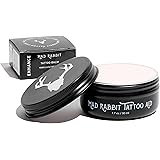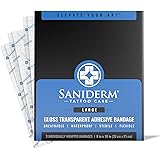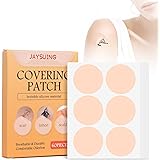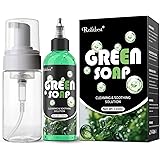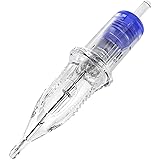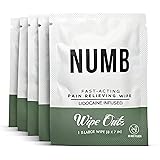Imagine this common scenario: you enthusiastically applied a vibrant temporary tattoo for a fun night out or a themed event. It looked fantastic, perfectly capturing the playful spirit you were going for. However, as the next morning arrives, perhaps a formal work meeting is scheduled, or a family gathering requires a more understated look, and suddenly that cool design transforms into an urgent removal project. This exact situation is familiar to many who enjoy the spontaneity of fake tattoos, a sentiment often reflected in popular beauty hacks, as hinted by the video above. The true challenge, however, frequently lies not just in applying these temporary adornments but in removing them quickly and efficiently without causing skin irritation.
Why Quick Fake Tattoo Removal Becomes a Necessity
While temporary tattoos are designed to fade over a few days or weeks, there are numerous reasons why someone might need to remove them sooner. Sometimes, a design might not look as expected once applied, or perhaps it starts to peel awkwardly, creating a messy appearance. For professional reasons, an employer’s dress code might necessitate clear skin, making speedy removal a priority before a job interview or presentation. Furthermore, some individuals simply grow tired of a design sooner than anticipated and are looking for a fresh start for their skin.
The urgency to remove fake tattoos is often underestimated until one finds themselves in a time crunch. Being prepared with effective methods can save a great deal of stress and ensure skin remains healthy. It is usually understood that gentle but firm action is required to avoid unnecessary scrubbing. Knowing the best techniques is therefore seen as a valuable piece of knowledge for anyone who enjoys experimenting with temporary body art.
Understanding How Temporary Tattoos Adhere to Skin
Before diving into removal methods, it is helpful to understand how temporary tattoos work. Most fake tattoos, especially the common transfer type, consist of a thin layer of ink and an adhesive backing. When applied to the skin, this adhesive, often a form of medical-grade glue, bonds with the outermost layer of the epidermis. This bond is designed to be strong enough to last for a few days but weak enough to be temporary.
The key to effective fake tattoo removal often involves breaking down this adhesive layer or dissolving the ink. This can be achieved through various solvents or mechanical means. Different types of temporary tattoos may also respond differently to specific removal techniques. Knowing this principle helps in selecting the most appropriate and least irritating method for your skin.
Top Methods for Quick Fake Tattoo Removal
Several home-based solutions are often found to be highly effective when one needs to remove fake tattoos quickly. These methods utilize common household items, making the process convenient and accessible. Safety should always be prioritized, and it is usually recommended that a patch test be performed on a small area of skin first, especially for sensitive individuals.
Oil-Based Solutions: Gentle yet Effective
One of the most popular and gentle approaches involves the use of oil-based products. These substances work by penetrating the adhesive layer, loosening its grip on the skin. Imagine if a sticky label needed to be removed without damaging the surface; oil often proves to be an excellent solution, and the same principle applies here.
-
Baby Oil or Olive Oil: These are widely considered excellent choices due to their mildness and effectiveness. A generous amount of oil is usually applied directly over the tattoo and allowed to sit for several minutes, giving it time to soak in. Afterwards, the area is gently rubbed with a cotton ball or soft cloth. The tattoo often begins to dissolve and can be wiped away with minimal effort, making it ideal for larger fake tattoos.
-
Coconut Oil: Similar to baby and olive oil, coconut oil is another natural option known for its moisturizing properties. It can be massaged into the tattoo, left for a few minutes, and then wiped off. This method is especially favored by those with dry or sensitive skin, as it helps to condition the skin during the removal process.
-
Makeup Remover (Oil-Based): Many makeup removers, particularly those designed for waterproof mascara or heavy foundation, contain oils that are effective at breaking down cosmetic adhesives. A cotton pad soaked in oil-based makeup remover can be pressed onto the fake tattoo for a minute or two before being gently rubbed away. This is often a quick and convenient option if one is already part of a regular beauty routine.
Alcohol-Based Solutions: Fast-Acting Power
For more stubborn fake tattoos, or when speed is of the essence, alcohol-based solutions can be employed. These agents are known for their ability to dissolve adhesives and pigments quickly. Care must be taken, however, as alcohol can be drying to the skin, and excessive use should be avoided.
-
Rubbing Alcohol (Isopropyl Alcohol): This is perhaps the most potent and fastest method for removing fake tattoos. A cotton ball soaked in rubbing alcohol is gently rubbed over the tattoo until it begins to disintegrate. It is usually seen that the tattoo vanishes quite rapidly with this method. Following removal, it is advisable to moisturize the skin to counteract any drying effects that may occur.
-
Hand Sanitizer: Most hand sanitizers contain a significant percentage of alcohol, making them a readily available alternative to rubbing alcohol. A small amount can be applied to the tattoo and rubbed with a paper towel or cloth. The tattoo is often observed to lift off quite easily. Again, moisturizing the skin afterwards is a recommended practice.
Household Items & Exfoliation: Alternative Approaches
Beyond oils and alcohol, some other common household items can be pressed into service, and mechanical exfoliation methods are also valuable. These options provide additional pathways for fake tattoo removal, ensuring that a solution can almost always be found.
-
Sticky Tape (Cellophane Tape): This is a simple, low-tech solution for fresh, surface-level fake tattoos. A piece of strong sticky tape is pressed firmly onto the tattoo and then quickly peeled off. The adhesive of the tape often lifts off the tattoo’s particles. This method might need to be repeated several times, and it is most effective on newer tattoos that have not yet fully bonded with the skin.
-
Baking Soda and Lemon Juice Paste: A paste made from baking soda and lemon juice can offer a gentle exfoliating action. The abrasive quality of the baking soda combined with the mild acidity of lemon juice works to break down the tattoo. This paste is typically applied, left for a few minutes, and then gently scrubbed off before rinsing. It is important to note that lemon juice can make skin sensitive to the sun, so sun exposure should be limited immediately after use.
-
Nail Polish Remover (Acetone): While highly effective, nail polish remover, particularly formulas containing acetone, should be used with extreme caution and as a last resort. It is very harsh and drying to the skin. If chosen, a small amount should be applied to a cotton swab and used *only* on the tattoo area, followed immediately by thorough rinsing and moisturizing. Prolonged contact is to be avoided due to the potential for severe skin irritation.
-
Exfoliation with a Washcloth or Body Scrub: Gentle physical exfoliation can also help to remove fake tattoos. Warm water and soap, combined with a vigorous scrub from a washcloth or a mild body scrub, can gradually wear away the tattoo. This method is generally slower but is one of the gentlest options for the skin. It might be preferred if there is no immediate rush for complete removal.
Tips for Safe and Effective Fake Tattoo Removal
Regardless of the method chosen, certain practices should be observed to ensure the skin remains healthy and unirritated during the fake tattoo removal process. Proper technique can make all the difference, preventing redness or sensitivity.
-
Always Perform a Patch Test: Before applying any new substance extensively to your skin, especially if you have sensitivities, a small patch test on an inconspicuous area is universally recommended. This helps to identify any adverse reactions before they affect a larger area.
-
Be Gentle: Excessive scrubbing or aggressive rubbing can lead to skin irritation, redness, or even minor abrasions. It is usually advised that patience and gentle pressure are more effective than brute force. The goal is to dissolve the tattoo, not to scrub off layers of skin.
-
Moisturize Afterwards: Many removal agents, particularly alcohol, can strip the skin of its natural oils, leading to dryness. Applying a good quality moisturizer after fake tattoo removal is a crucial step in keeping skin hydrated and healthy. This helps to restore the skin’s natural barrier.
-
Rinse Thoroughly: After the tattoo has been removed, the area should be rinsed thoroughly with water to wash away any remaining residue of the removal product or tattoo particles. This prevents continued exposure to potentially irritating chemicals.
When to Exercise Caution
While most fake tattoo removal is straightforward, there are situations where extra caution is needed. For instance, if the tattoo is located near sensitive areas like the eyes or mouth, extra care must be taken to avoid getting any removal product into these areas. Harsh chemicals should definitely be avoided in such proximity.
If skin is already irritated, cut, or sunburned, it is typically advised that tattoo removal attempts be postponed until the skin has healed. Applying alcohol or other strong solvents to compromised skin can exacerbate the problem and cause significant discomfort or further damage. When in doubt, consulting a dermatologist or waiting for the tattoo to naturally fade is often the wisest course of action for fake tattoo removal.




